Bright orange turbans, long silver swords, incessant honking and streets where everything from elephants to rickshaws have to compete for space, Amritsar is an assault on the senses like no other place I’ve ever visited.
The Old City is a maze of narrow, littered streets and the air is filled with aromas of Indian snacks being prepared in the extremely basic food shops such as samosas, pakoras and even battered, deep-fried butter sandwiches. The little alleyways are dotted with carts selling chai, paranthas, lime sodas and sandwiches and it’s all veggie fare. Trying to get around is no easy task, between dodging the touts, scooters, motorbikes, auto rickshaws, cycle-rickshaws, people, taxis and even the odd working elephant you have your work cut out for you when visiting The Golden Temple Amritsar!
The Golden Temple
In the middle of the Old Town is the famed and truly spectacular Golden Temple of Amritsar. The temple is Sikhism’s holiest shrine and attracts millions of devoted Sikhs and tourists every month, it is to Sikhism what the Vatican is to Catholicism. Sikhism is a religion devoted to one God and was founded in Punjab back in the 15th century in response to the Hindu idea of a caste system. The fundamental belief in the religion is the equality of all people, no matter what race or creed. The Guru Granth Sahib is the Sikh holy book, the equivalent to the Bible for Catholics or the Quran for Muslims.
Throughout the temple grounds there are rooms, each with a big glass window, where priests silently read the holy book in shifts twenty-four hours a day. Worshipers will come to the windows to pray and make donations. Inside the temple itself the original Guru Granth Sahib is read aloud by three priests and is broadcast over radio and tv. Pilgrims sit around upstairs in the temple reading along in a very communal way, true to this religion. Many devotees abstain from alcohol, tobacco and drugs. This is taken seriously and alcohol and cigarettes are not sold in the temple’s immediate vicinity, even outside of it’s walls.
Arriving before dawn
Arriving to Amritsar at 4am, after a journey of more than twenty-one hours by bus, including a flat tyre, manic driving, heavy traffic and seriously uncomfortable seats, we immediately made our way to the temple grounds. Even at this early hour the place was still buzzing with life with people praying and a breakfast of chai and bread being handed out at the temples main gate free of charge.
Depositing our shoes at a counter, we were given a token and told that here there would also be no charge, a theme which continued throughout our time at the Golden Temple. Inside one of the two huge white archways, which separates the temple from the busy bazaars outside, was one of the guesthouses where pilgrims (and tourists) could stay for free. Hundreds of people were scattered around the place, those who could not get a room were sleeping on the ground. Unfortunately for us the tourist dorm was full and so it was off to find a hotel as the sun was coming up.
Once is never enough
We visited the temple a number of times throughout our stay in Amritsar at different times of the day to see the temple in different lights and each return visit was as good as the last. The Golden Temple is a small part of a massive complex. There are two main gateways which lead in from the hectic streets outside. These huge white archways, topped by a giant clock tower, usually have two guards positioned outside who carry a sword and a tall spear and are dressed in long purple robes, purple turban, curly toed Punjabi shoes, called jutti, and a long beard completes the look.
Staying inside the temple
Once inside the gates there are a number of buildings dedicated to accommodating travelling pilgrims. Rooms are basic and there is no charge for staying here, there is even a free shuttle bus from the train station to the Temple so that visitors don’t have to spend any money coming to pay homage at this shrine.
Communal Kitchen
Walking in the gate at the eastern side you pass the enormous Guru-Ka-Langar, home to a number of dining halls, a massive washing up area and a kitchen with pots you could house a family in. This kitchen, run entirely by volunteers and supported by the donations of diners, feeds approximately 80,000 people a day and even more during festival times.
We were lucky enough to be brought down to the kitchens to see the meals being prepared, the cauldrons that the food was being prepared in were gigantic and the chapatti station was working at a hundred miles an hour with volunteers kneading, rolling and flipping the dough at unimaginable speeds. Eating in the vast dining halls was a great experience and we had a number of free meals sitting alongside visiting pilgrims, everyone, including us, wearing a scarf covering their head, as is the Sikh way.
Sitting in straight rows up and down the halls, men came around with silver buckets full of rice, beans and daal. They ladled out the strictly vegetarian food and everyone got stuck in and there was no limit to what you could eat, seconds, thirds, no problem, a big feed for free, this was my kind of restaurant. Once meal time was over, which was pretty quickly as the next batch of people were waiting outside to be fed, water was thrown on the ground and a guy with a squeegee went flying up and down the aisles polishing the floor and they were ready for the next set of hungry pilgrims. On the way out happy volunteers took our trays and in the basketball court sized washing up area they got to work polishing every tray, spoon, bowl and cup.
The sacred pool of nectar
Beyond the Guru-Ka-Langar was a foot bath which lead onto some steps and down to the edge of a huge square pool known as Amrit Sarovar (pool of nectar). The floors beneath us are all white marble and all around is a high white wall. A shaded pathway hugs the wall, lined with white columns, separating typical persian shaped door ways. People come here to sleep near the Hari Mandir Sahib, the Golden Temple.
Pilgrims swim in the sacred waters of the pool because of it’s natural healing powers. The sheer volume of people visiting this holy place is bewildering and we were constantly being stopped for chats and photographs. A lot of these people, were from areas of Punjab where tourists don’t frequently go and so for some it was their first time seeing a foreigner in the flesh, even with no English they were delighted to come and talk to us but getting ‘one snap’ with us was the icing on the cake for them. We were happy to oblige in most cases, even though we now probably feature in a lot of random Indian Facebook profile pictures and family holiday photo albums!
Visiting the temple itself
In the centre of the Amrit Sarovar stands the Golden Temple, connected to the surrounding pathways by the Guru’s bridge. Giant gold doors lead to the bridge which is sheltered from the hot, 48 degree weather and gold coloured fans attached to the ceiling provide a welcome breeze for visitors walking out to the centre of the holy pool. The two storey marble temple is gilded with 750kg of gold and is in the shape of an inverted lotus flower, symbolising purity.
We waited inline for the guards to let us through and there was a genuine buzz of excitement amongst the crowd waiting to gain entry. As soon as the guards lifted their spears devotees rushed forward touching and kissing the marble threshold reverently before entering the temple. Inside priests played music using a tabla (Indian drum) and a harmonium, a kind of Indian squeezebox, played in a seated position. More priests read from the oversized Guru Granth Sahib and worshipers read along from prayer books, provided free of charge.
Inside the Golden Temple
Inside the temple was beautiful, the colours and the paintings were immaculately kept and it really was fantastic to see how a community could maintain such a huge complex and such a stunning temple all on the will of volunteers and at no cost to the followers of this inclusive faith. We wandered upstairs where more priests were reading another copy of the oversized holy book and people were sitting cross-legged all around the terrace area, overlooking the floor area below, where we had entered the temple.
Unfortunately photography isn’t allowed inside but the scenes we witnessed inside the Hari Mandir Sahib and the inclusive nature of the Sikh people we met in and around the temple complex are memories that will remain with us regardless of photographic evidence, in our minds and in who knows how many visiting Indian pilgrims holiday photographs.
Pin it!

Brian is a travel writer, photographer, blogger, travel addict and adventure-junkie. Being outdoors, getting off the beaten track and outside his comfort zone is what makes him tick. Brian’s the dreamer in the relationship; when he’s not travelling, he’s dreaming about it! Keeping fit, cooking, music and red wine take up the rest of his time.
Sign up for our free travel photography Ebook "Faces of Nepal" and you'll also receive our monthly newsletter.

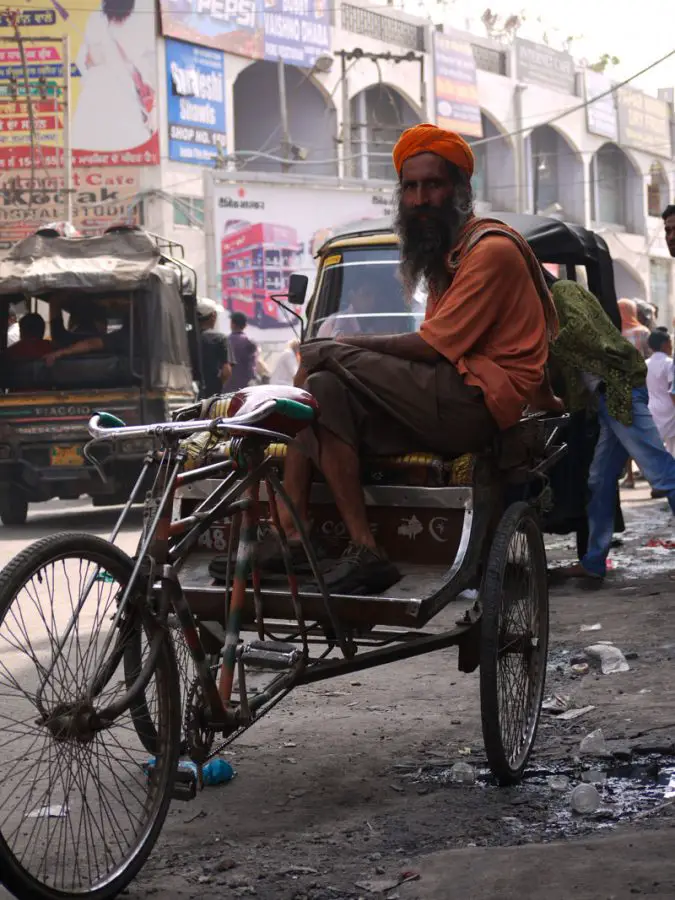
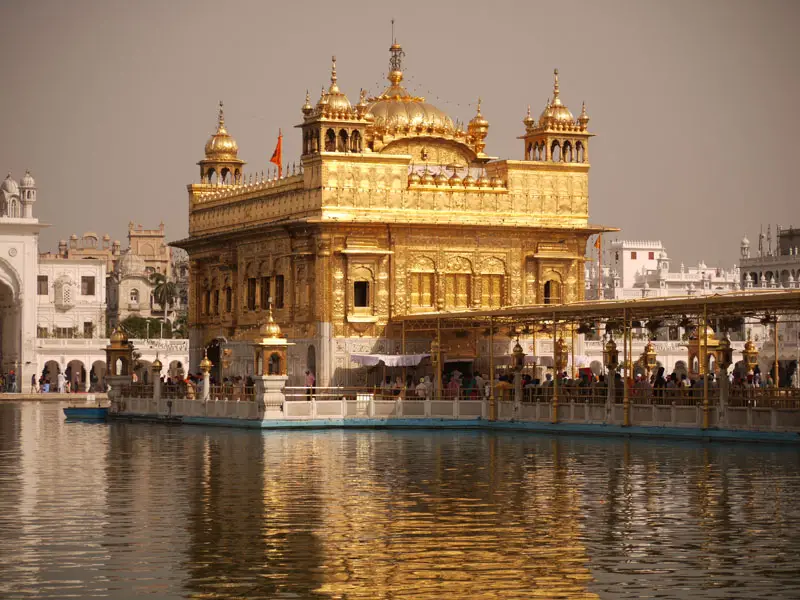
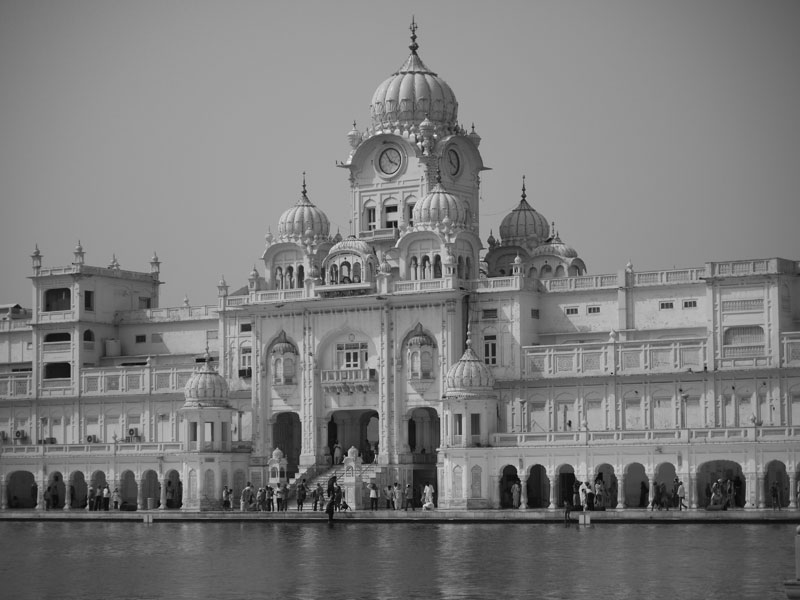
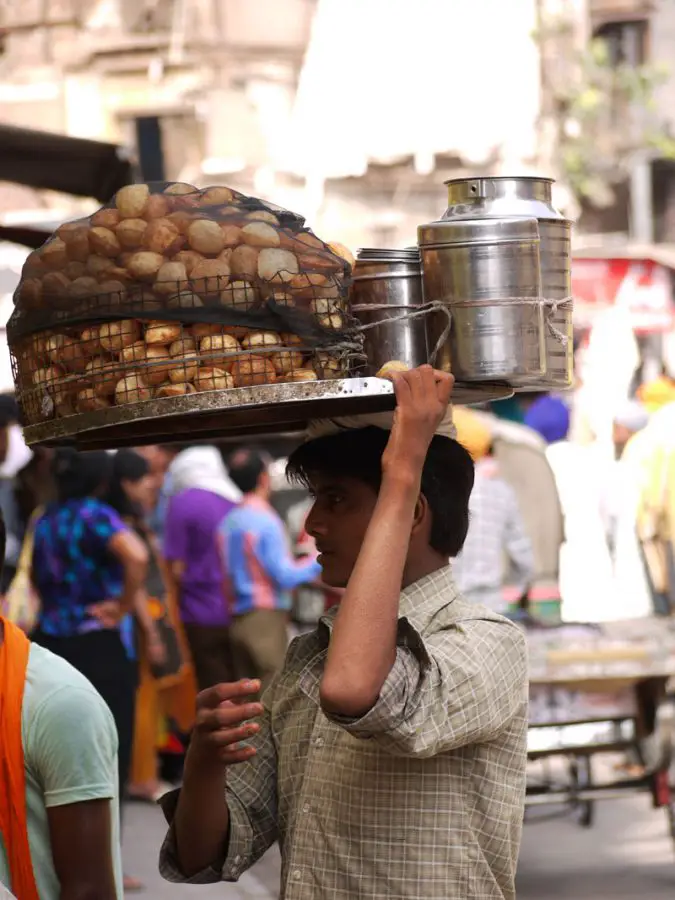

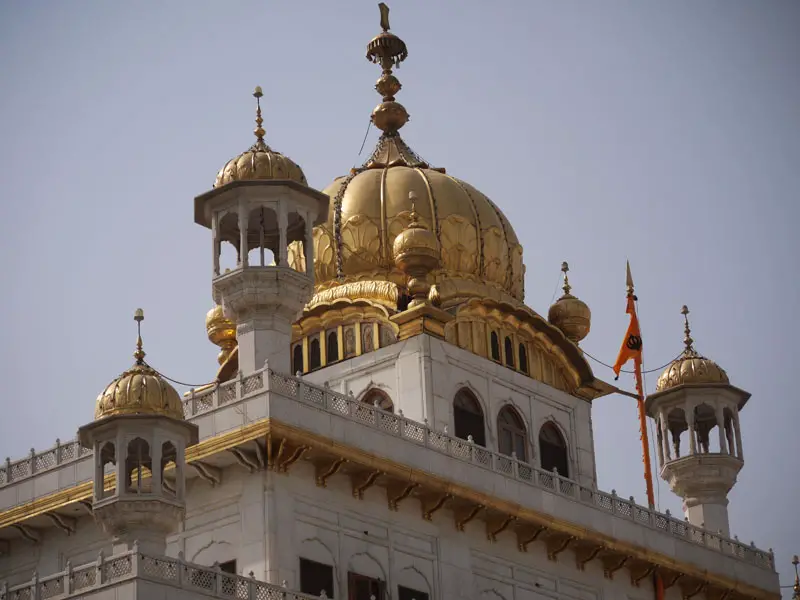
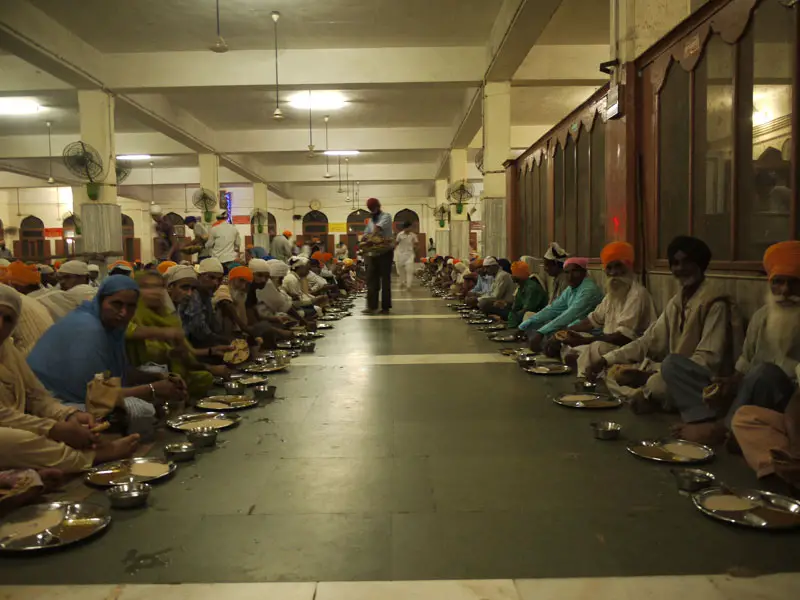
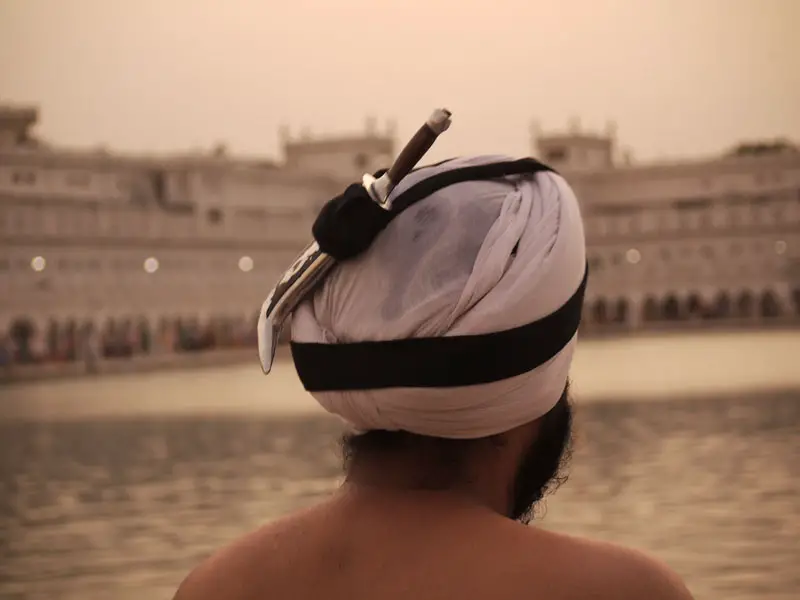
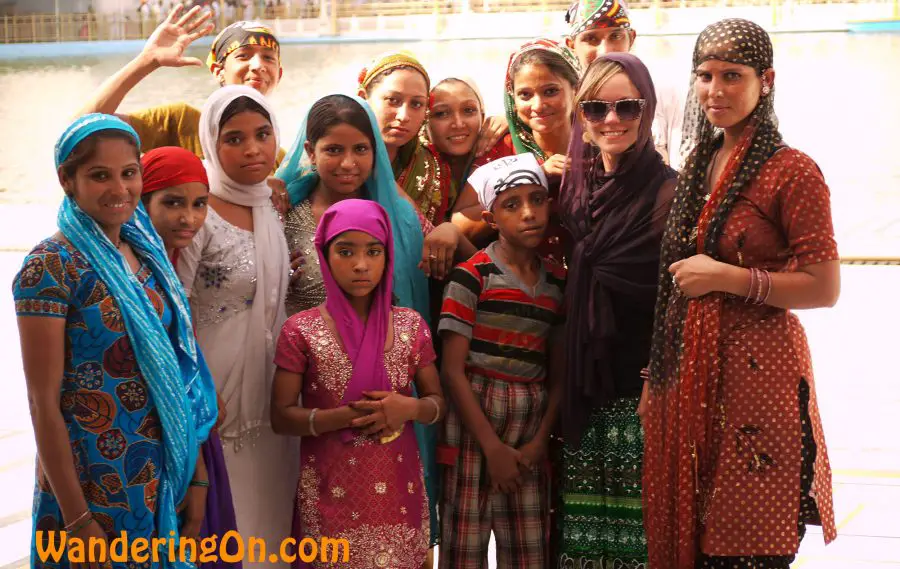
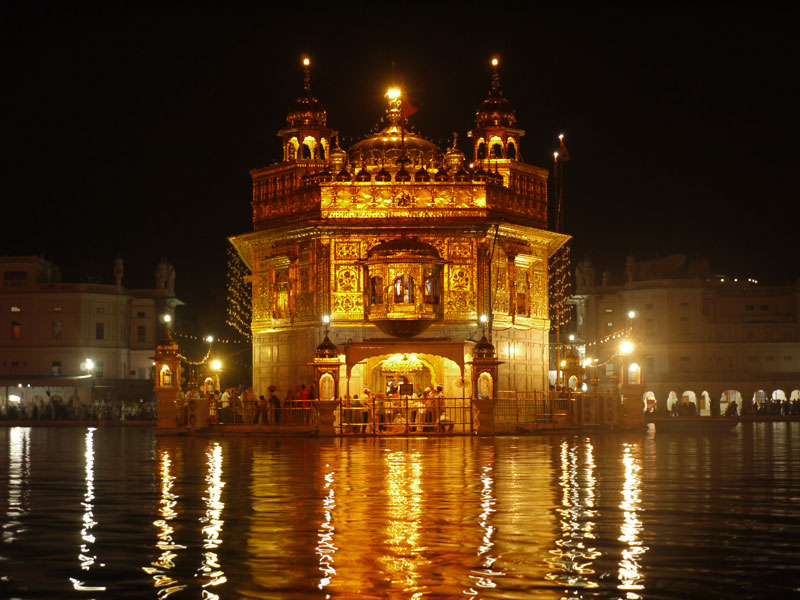

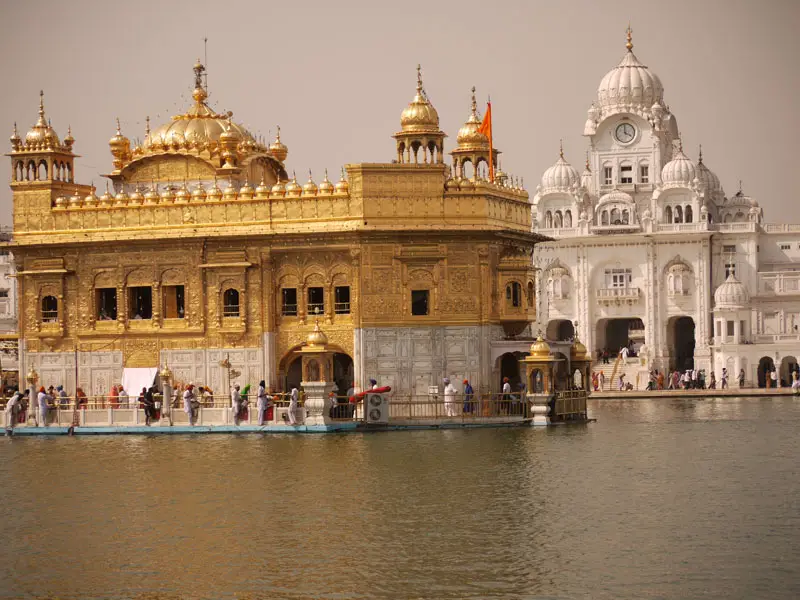

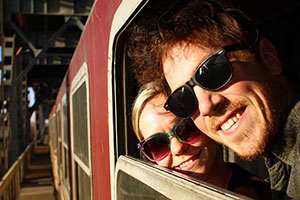





Trackbacks/Pingbacks